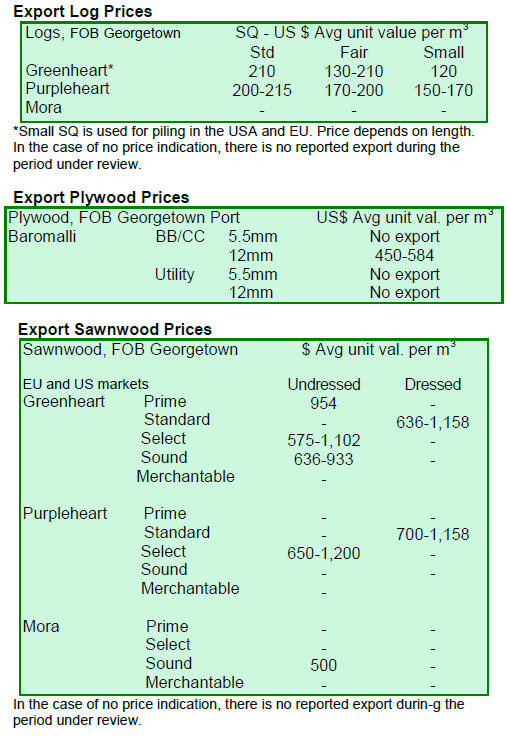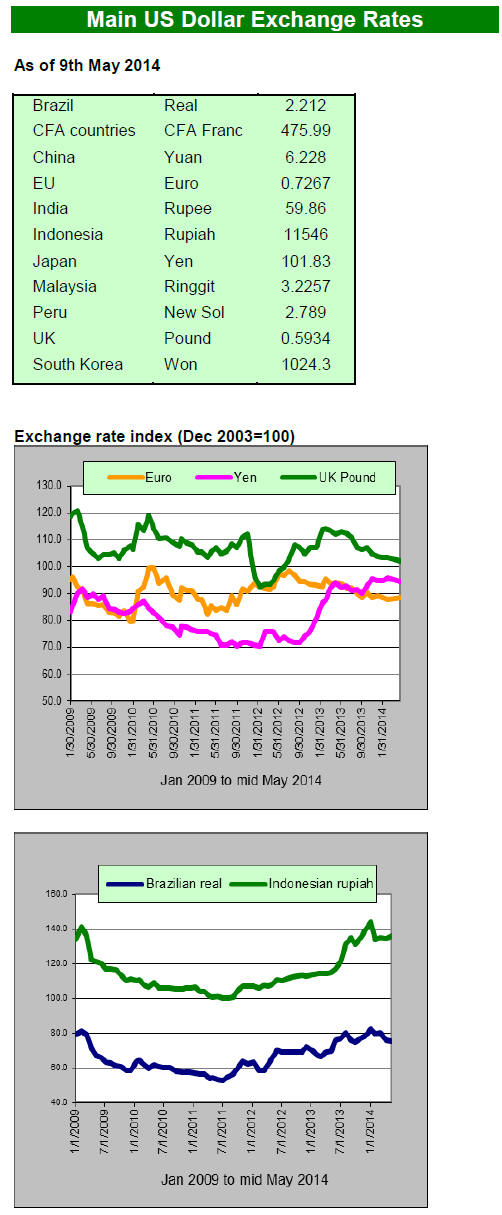2. GHANA
Ghana on track to trade FLEGT licensed
timber
A meeting of managers of all projects and activities being
implemented in support of the Forest Law Enforcement
Governance and Trade Voluntary Partnership Agreement
(FLEGT-VPA) between Ghana and the European Union
was held recently.
The meeting was jointly convened by the EU Delegation
to Ghana and the Forestry Commission of Ghana in an
effort to ensure the effective collaboration and
coordination between the organisations managing these
projects.
Ghana became the first country to agree a VPA with the
EU which will result in systems to verify the legality of
timber for exports and to strengthen forest governance.
The EU is Ghana largest market for wood products.
By agreeing the VPA Ghana has committed to dealing
with the challenges of illegal logging and its associated
economic, social and environmental costs. The changes
that have been effected in Ghana paved the way for the
country to access investment from the World Bank, the
International Finance Corporation (IFC) and the African
Development Bank.
Over the past five years, the Forestry Commission
has
been working to put in place the systems and reforms
necessary to implement the VPA. After considerable
progress with the development of the system to license
legal timber Ghana is on track to soon be shipping FLEGT
licensed wood products.
Signing EPA will ensure competiveness of exporters
Ghana‟s Minister of Trade and Industry has said that
signing the ECOWAS-EU Economic Partnership
Agreement is essential as not signing would seriously
undermine export opportunities for the main commodities
such as cocoa, gold, oil and timber as well as for nontraditional
products.
The EU is Ghana‟s largest export market, accounting for
more than half of all exports and failure to seize the
opportunity for improved market access would result in
the country‟s exporters losing competitiveness in the EU
market.
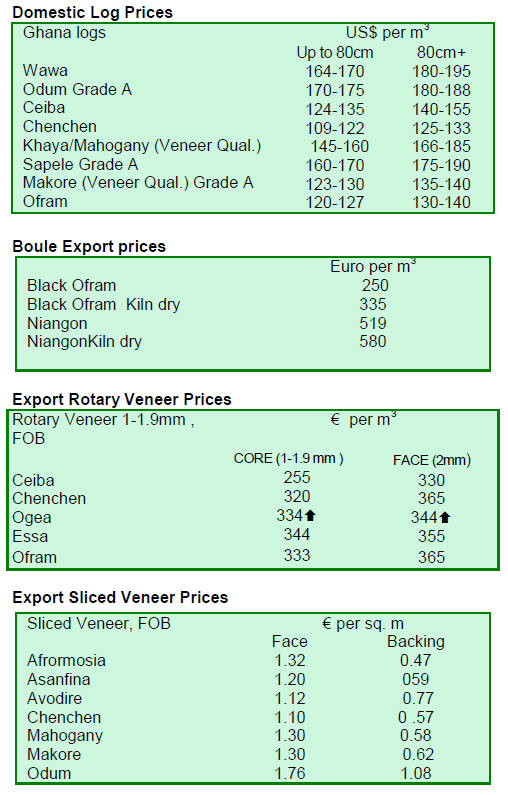

3. MALAYSIA
Promoting recognition of legal timber in
the domestic
market
Malaysia is presently negotiating with the EU on a VPA
but while these negotiations continue the private sector is
implementing a project to identify certified and credible
timber suppliers in Malaysia.
The ¡°Certified Timber and Credible Suppliers¡± (CTCS)
project was initiated by Ahmad Shah and is currently
being executed by PEKA (Association of Malaysian
Bumiputra Timber and Furniture Entrepreneurs).
The CTCS has the full support of the Ministry of
Plantation Industries and Commodities, the Malaysian
Timber Industries Board and the Malaysian Timber
Council.
According to Ahmad, ¡°In Malaysia there is inadequate
recognition and use of certified timber and timber products
in the domestic market. The trade network between small
and medium sized timber companies and domestic housing
developers is poor such that the SMEs find it difficult to
trade directly¡±.
The CTCS was designed to promote sales of green and
environmentally friendly wood based products to domestic
consumers and to regain and increase market share in
applications such as flooring, window and door frames.
Currently, the CTCS Programme covers four main
product
categories: (1) windows, doors and flooring, including
decking, (2) glulam, (3) furniture, and (4) interior
products.
The strength of this initiative lies in its Quality Assurance
Verification which verifies the source of timber and
assesses quality standards and compliance with the green
building code.
First quarter exports from Sabah
The latest data released by the Sabah Department of
Statistics show that Sabah exported 58,282 cubic metres of
sawntimber in the first quarter of 2014 worth
RM90,180,563 (approximately US$26.66 million).

Also in the first quarter, Sabah exported 141,422 cubic
metres of plywood worth RM235,027,628 (approx. US$72
million).
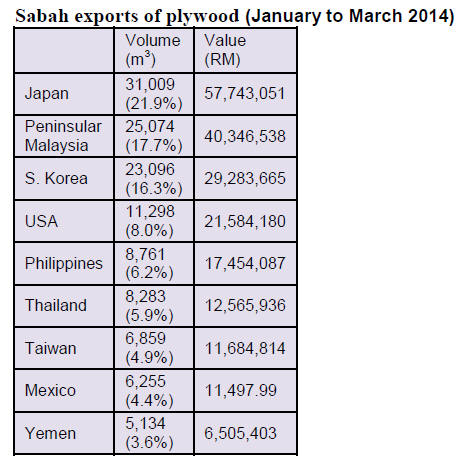
Japan takes lion¡¯s share of Sarawak plywood
exports
Last year log production in Sarawak fell to 8.2 mil. cubic
metres compared to 9.5 mil. cubic metres in 2012, and
10.2 mil. in 2011. Of the total log production in 2013
around 8 mil. cubic metres was harvested from the hill
forests and the remaining came from swamp forests.
In 2013 log exports from Sarawak totalled 2.8 mil. cubic
metres with India being the biggest buyer taking a 62%
share.
Sarawak Timber Association data showed that in 2013,
Sarawak exported 2.58 mil. cubic metres of plywood
valued at RM 4.0 bil. (approximately US$ 1.23 bil.). Out
of this total Japan took 1.43 mil. cubic metres (55%).
4. INDONESIA
Satellite mapping provides new
deforestation data
In November 2013 a group of researchers who partnered
with Google and NASA noted that there appeared to be an
alarming increase in the rate of deforestation in Indonesia.
Through satellite mapping technologies the researchers
found that the rate of deforestation in Indonesia had
doubled between 2000 and 2012.
The deforestation rate in Indonesia was estimated to have
increased from about 10,000 square kilometres per year in
2000-03, to nearly 20,000 square kilometres per year
between by 2011-2012.
The impact of deforestation in Indonesia has given rise to
more frequent floods and contributes to rising
temperatures in the archipelago say researchers.
The Ministry of Forestry (MoF) has released details of
grants provided under the First Tropical Forest
Conservation Act ( TFCA ).
The available funds will be disbursed by the Biodiversity
Foundation ( KEHATI ) that facilitate the conservation,
protection, restoration and sustainable use of tropical
forests in Indonesia. KEHATI supports the Berau Forest
Carbon Program ( BFCP ) and the Heart of Borneo
initiative in Kapuas Hulu, West Kalimantan and in the
West Kutai district, the Mahakam Ulu and the Berau
districts in East Kalimantan .
Nine institutions will receive grants namely : Operation
Wallacea Trust (Bogor), PEKA Indonesia Foundation
(Bogor), BIOMA Foundation (Samarinda), Center of
Sosial Forestry Mulawarman University (Samarinda),
Organis Indonesia Alliance (Bogor), FORINA (Bogor),
PRCF Indonesia Foundation (Pontianak), Gemawan
Institution (Pontianak) and Penabulu Foundation
(Jakarta).
For more see
http://www.dephut.go.id/uploads/files/62a4b8b8caffc878f
9dc21bfe3c2dafa.pdf
Protect environment but not at expense of local
communities
President Susilo Bambang Yudhoyono has said Indonesia
should strive for a balance between protecting the
environment and the use of forests by local communities.
In an address at the Forests Asia Summit in Jakarta the
President said ¡°It is about striking a balance between the
need to conserve the environment and guaranteeing the
rights of local communities over their customary forests,¡±
The President called on all countries in the region to
implement strategies to promote sustainability of all
natural resources.
Biomass and Bioenergy, an opportunity for Indonesian
forestry
The Indonesian government has adopted an energy plan
which foresees a change in energy sources. By 2025 the
government hopes to secure 15 % of the energy needs by
investing in renewable energy sources such as geothermal
sources, biofuels and biomass.
The Ministry of Energy and Mineral Resources has
developed a Biofuel Development Roadmap to this end.
The forestry sector, which manages 60% of the land area
of Indonesia, has great potential as a supplier of bioenergy
to meet national energy needs.
According to Ir. Sofwan Bustomi, wood energy resources
are still a low priority for the government but emphasised
the wood pellet industry would deliver many local social
and economic benefits and could provide a source of
export earning as the global wood pellet market is
projected to grow quickly.
Economy on a stronger footing in first quarter
The Bank of Indonesia (BoI)has reported a year on year
growth in the first quarter of 2014 of 5.2% slightly below
that in the fourth quarter of 2013 (5.7%). The first quarter
2014 GDP growth is below the Bank‟s expectation.
In a press release the BoI said the slower than expected
growth was largely due to external factors as the growth in
exports slowed particularly for minerals and coal.
Imports also slowed in the first quarter of 2014 in line with
an easing of domestic demand and by lower consumption
in the public sector.
Economic growth in the first quarter of 2014 was
supported by satisfactory performance of household
consumption and investment.
For more see: http://www.bi.go.id/en/ruang-media/siaranpers/
Pages/SP_1628_DKom.aspx
In related news inflation in April 2014 continued a
downward trend and the Consumer Price Index (CPI) in
April recorded deflation of -0.02% month on month.
The mild deflation in April mainly was supported by
falling prices for fresh food the result of an abundant
supply as harvests were good in the first quarter.
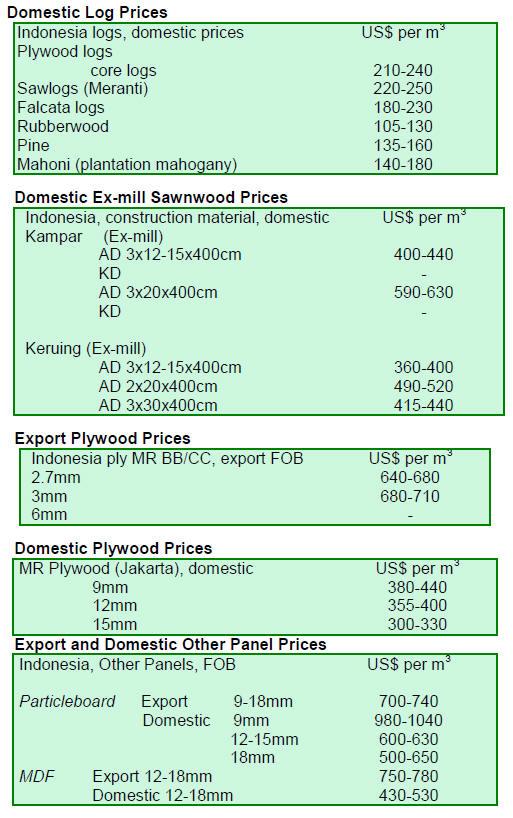
¡¡
5. MYANMAR
Tender prices collapse on heels of log
export ban
Average prices secured by the MTE during the latest open
tender (28 April) are shown below along with the average
prices obtained in the previous sale for comparison.
As logs can no longer be exported but have to be milled
locally the decline in average prices is in line with
forecasts made by local analysts.
Given the sizeable volume of unshipped logs in the
country observers do not foresee a rise in open tender sale
prices in the coming months. Average prices US$ per
hoppus ton are shown below.
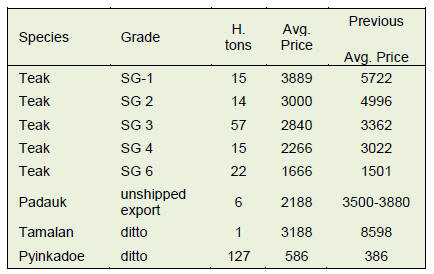
Tamalan (Dalbergia oliveri) is the favourite of
Chinese
buyers and attracted very high prices prior to the log
export ban as will be seen from the above table.
Risk that timber smuggling will rise
During March and April this year almost 600 tons of
illegally harvested timber was seized by authorities in
Mandalay. The illegal timber was either in illicit log
depots or loaded on trucks ready for transport.
Tamalan accounted for more than 500 tons of the total
seized, a huge increase on the mere 50 tons seized in the
same period a year before. About 400 tons of tamalan was
seized during the‟ water festival‟ between 13th and 16th
April.
The Forest Department reported seizure of 502 tons of
tamalan ; 57 tons of padauk; 6 tons of teak 6 tons; 6 tons
of pyinkadoe; 2 tons of red sandalwood and 13 tons of
other species.
Between 29 April and 4 March over 1,000 tons of teak and
non-teak hardwoods were seized by authorities across the
country. The largest quantity was seized in Sagaing
Division in the north says the Ministry of Environmental
Conservation and Forestry (MOECAF).
FREDA Chairman Ohn, commented that, because of the
log export ban, overland smuggling appears to be
increasing.
According to Weekly Eleven Journal the cost of illegally
trucking Tamalan from Mandalay to Muse on the
Myanmar China border could be as high as Myanmar
Kyats 100,000 (roughly US$10,000) per trip.
From Namhsan and Kholan in the Southern Shan States to
China. skirting the Kengtung area, truck owner will
reportedly receive K90,000 per trip. Each truck can carry
as much as 15 to 20 tons.
Analysts say that, because the authorities have stepped up
operations against smugglers, the illicit trade has become
more risky. However, the risks pale when such enormous
profits are possible. Unless the government finds an
answer to these activities, analysts say the situation may
worsen.
Forest degradation from illegal activities is now viewed as
a major cause of the increased risk of natural disasters and
the domestic media are trying to raise public awareness of
these issues.
Record export shipments of teak and other hardwoods
The local newspaper, Daily Eleven, quoting Ministry of
Commerce trade statistics, reported a record of shipment
of teak and non-teak hardwood logs worth nearly one
billion US dollars in the last fiscal year.
It reported that some US$916,400 million was exported by
sea and an additional US$31,420 million overland.
According to the data available, teak log exports amounted
to US$638.400 million while the quantity of other
hardwood logs shipped was over 590,000 tons valued at
US$222 million.
6.
INDIA
India¡¯s wood product exports jump 8
percent
Between April and December 2013 India‟s wood product
export exports were over US$540 mil. Up 8.9% year on
year. Exports of plywood and veneer fell and wooden
furniture exports were maintained at the same level as a
year earlier.
In terms rupee, exports improved from Rs.27,365.08
million a year ago to Rs.32,953.82 million between April
and December 2013, a growth of 20.42 %. Export figures
in US dollars terms are shown below.
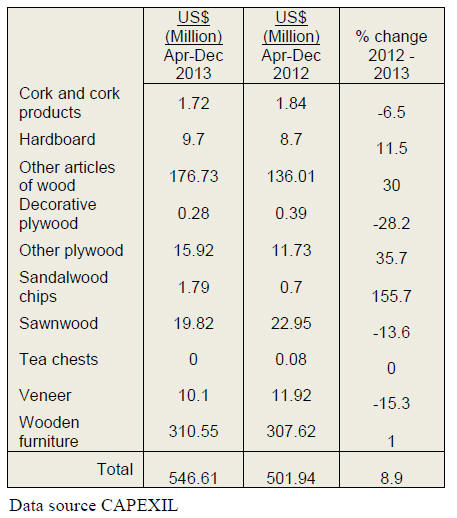
India¡¯s largest casuarina propagation centre
APPM Ltd, a group company of the US based
International Paper in India, has established India‟s largest
casuarina clonal propagation centre in Mulugapudi village
in Vishakhapatnam district of Andhra Pradesh.
This is the fifth centre opened in the country and
is
equipped with technology to develop superior clones to
improve the productivity of pulpwood plantations.
Yields are expected to increase to25- 28 tonnes of
pulpwood per hectare over a 4 year plantation cycle as
against the 12- 14 tonnes per hectare at present in
conventional seedling plantations.
By establishing plant distribution centers around the
country the company has made it easier for farmers to
obtain planting high quality stock as well as technical
support. It is imperative that wood production is expanded
to support the domestic industry.
Domestic teak log prices
At various depots approximately 12,500 cubic metres of
newly harvested and logs left unsold at earlier auctions
were put up for sale.
The average prices recorded at the most recent auction are
as follows:
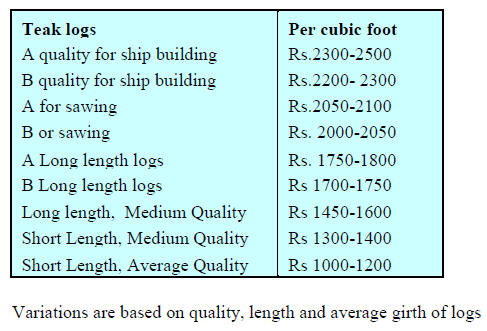
Good quality non-teak hardwood logs (Haldu (Adina
cordifolia), Laurel (Terminalia tomentosa), kalam
(Mitragyna parviflora) and Pterocarpus marsupium) of 3 to
4 metres length with girths of 91cms and up attracted
prices in the range of Rs.700-900 per cubic foot.
Medium quality logs of the same size were sold at
between Rs500-600 per cubic foot. Lower quality logs
were sold at around Rs.250 per cubic foot.
Analysts report that a good quantity of freshly harvested
teak and hardwood logs are arriving at depots in Dang,
Vyara, Raj Pipla and Valsad.
Teak sales in Central India forest depots
Over 8,000 cubic metres of teak logs were sold at the
Timarni, Khirakia, Ashapur, Narmada nagar depots in
Central India.
As the volumes of teak available in the depots of
Maharashtra are declining the auctions in Madhya Pradesh
are good news for millers in and around Nagpur.
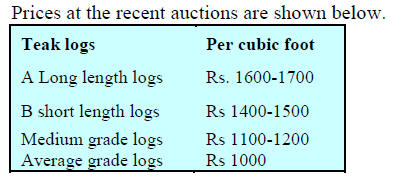
Millers switch to domestic teak as imported logs
getting smaller
The flow of imported plantation teak logs has been
maintained but domestic millers are complaining that the
quality of logs is deteriorating.
The plantation teak logs presently coming from West
Africa, especially from Nigeria, Ghana and Ivory Coast
are now smaller and of poor quality than previously. Also,
Sudan, Tanzania and Ghana used to ship good quality logs
and the recovery rate for these logs was comparable to
recovery rates for Myanmar logs.
Analysts suspect that, in the counties mentioned, all old
growth logs have been harvested as now most of the logs
arriving in India from W. Africa are small in the 30-36
inch girth range.
These developments have prompted some mills to begin
buying higher priced domestic teak as recovery rates are
better than for imported plantation teak.
Current C & F prices for imported plantation teak, Indian
ports, per cubic metre are shown below.
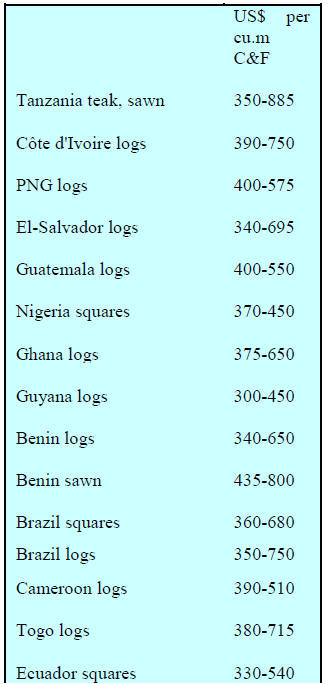
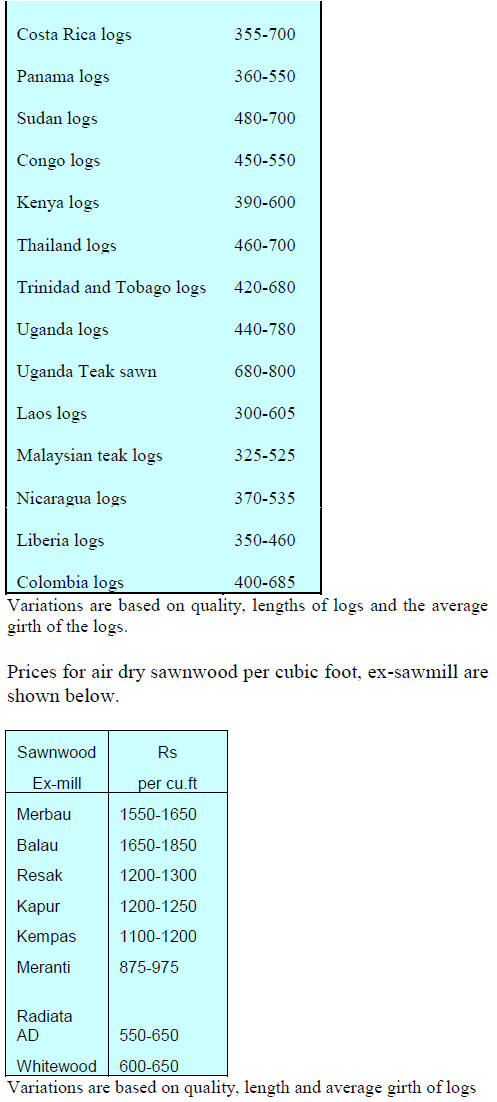
Balau, kapur and red meranti are gaining in
popularity and
demand for these timbers is expected to increase further.
Myanmar teak processed in India
Just prior to the introduction of the log export ban in
Myanmar Indian buyers increased the number of
shipments of logs from Myanmar and almost double the
number of shipments were made.
However, it was not possible to clear all stocks in
Myanmar so Indian buyers are now trying to negotiate
with the authorities for permission to export the logs left
behind.
In the domestic market teak prices have risen as
the
availability of high quality teak is likely to be an issue
once stocks of Myanmar teak are sold.
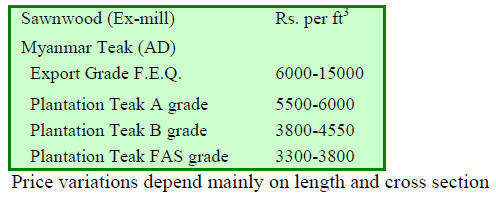
Imported sawnwood prices
Ex-warehouse prices for imported kiln dry (12% mc.)
sawnwood per cu.ft are shown below.

Plywood makers looking for an alternative to
gurjan
Plywood manufacturers rely heavily on sales to the
building and construction sectors but the real estate sector
continues to be weak despite builders offering a wide
range of discounts and other incentives to prospective
buyers.
Demand in the main urban centres is particularly
depressed and it is only sales in the smaller towns that
keep the market alive.
Gurjan, the main species used for face veneers in India is
no longer available in log form from Myanmar, the main
supplier until the log export ban was introduced.
Indian plywood mills are now searching for reliable
sources of alternative red coloured durable species. The
shortage of gurjan has pushed up plywood prices but
analysts say some mills are taking advantage of the
shortage of gurjan and raising rises more than justified.
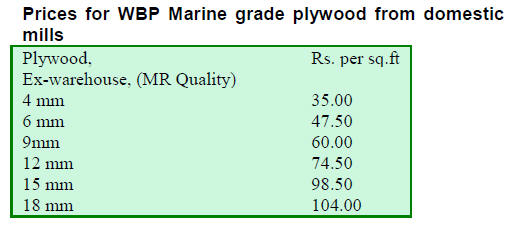
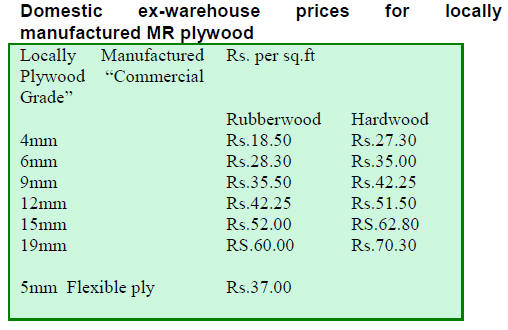
¡¡
7.
BRAZIL
New association asking for policies
to stimulate
investment
The newly-established Brazilian Tree IndustryAsociation
(IBA) represents almost the entire forestry sector in the
country, replacing the Brazilian Association of Wood
Panel Industry (ABIPA), the Brazilian Association of
High Strength Laminated Flooring Industry (ABIPLAR),
the Brazilian Association of Forest Plantation Producers
(ABRAF) and the Brazilian Pulp and Paper Association
(BRACELPA).
Companies in the new association have annual gross
revenues of R$ 60 billion, equivalent to 6% of GDP; they
employ around 5 million people which is close to 5% of
the economically active population (PEA).
In addition the association members export some US$8
billion annually, equivalent to about 3% of total Brazilian
exports.
IBA„s objectives for 2014 are to reduce the tax burden in
the forestry sector to stimulate investment, increase carbon
credit trading, broaden the debate on national
infrastructure and to further the debate on the purchase of
land by companies with foreign capital and the use of
genetically modified trees.
The forestry association would like to see a doubling in
the size of the forest sector by 2020, to see an increase in
plantations from 7 to 14 million hectares; to see pulp
production increase from 14 to 22 million tons per year
and paper production to rise to 13 million tons per year.
In the wood based panel sector IBA aims to raise panel
production from around 10 to 14 million tons per year.
To achieve to goals set forestry sector investments of R$
53 billion will be required from the present to 2020 with
the bulk being investment by companies that produce and
export pulp.
Public-private collaboration to strengthening forestry
in Mato Grosso
The Center for Timber Industries Producers and Exporters
of Mato Grosso (CIPEM) and the State government of
Mato Grosso, through the State Secretary for Industry,
Commerce, Mines and Energy (SICME), signed an
agreement providing for R$600,000 to be spent on the
State Sustainable Forestry Development Plan (PDFS).
SICME designated R$500,000 for the development of the
State Forest Plan and is committed to disseminate and
promote the development plan so as to attract investment.
The PDFS was launched in early 2014 and is the result of
a joint effortof the private sector (CIPEM) and the State
government for the development of forest-based activities
taking into consideration environmental, social and
economic aspects.
According to CIPEM, the launch of PDFS was very
important for the sector which has seen a decline in
production over the past years and currently operates at
only around 30% of its production potential. The average
annual production of the forest industry in Mato Grosso in
recent years required just 3.6 million cubic metres of raw
materials.
According to SICME, companies wood based industry
will benefit from a reduced tax burden on trade within the
state as well as interstate trade which,it is hoped, will
encourage expansion in the sector.
Infrared scan to distinguish mahogany from ¡®look-alikes¡¯
The Forest Products Laboratory of the Brazilian Forest
Service (LPF/SFB) is evaluating the use of infrared light
to distinguish mahogany from other similar species.
The financial support for this research is coming from the
International Tropical Timber Organization (ITTO).
Mahogany is an endangered timber species and included
in CITES appendix II limiting its trade. Sawn mahogany is
simillar in appearance to cedar (Cedrela odorata), andiroba
(Carapa guianensis) and curupix¨¢ (Micropholis Venulosa)
and there is a danger that mahogany could be mislabelled
as one of the „look-a-likes‟ and traded illegally.
Using a bench spectrometer (equipment that emits infrared
light), the researchers were able to take a visual
„thumbprint‟ of mahogany, cedar, andiroba and curupix¨¢
based on the unique chemical composition of each species
and have verified that it is possible to distinguish the
species using this technology.
The LPF will assess whether this methodology, using
portable devices in a commmercial environment, can be
used to identify mahogany wood with the same reliability
as in the laboratory.
New regulation makes trading more difficult
Mato Grosso is home to major wood product exporters but
in the first quarter of 2014 exports declined.
Between January to March 2014, 20,048 tons of wood
products were exported, down 28% compared to the same
period of last year. Trading revenue also fell but by only
6% to US$20.9 million.
Analysts point out that a new regulation (Normative
Instruction (IN) No. 21) published in December 2013 by
Brazilian Institute for Environment and Renewable
Natural Resources (IBAMA), made trading of wood
products more complex and this contributed to the decline
in exports.
The regulation IN 21 establishes standardised mechanisms
for forest products transport into the Document of Forest
Origin (DOF). The DOF is a compulsory license required
for transport and storage of forest products of native
species.
Observers point out that some processed forest products
are not included in IN 21 and are therefore blocked at the
port and this has undermined exports to MERCOSUR and
other markets.
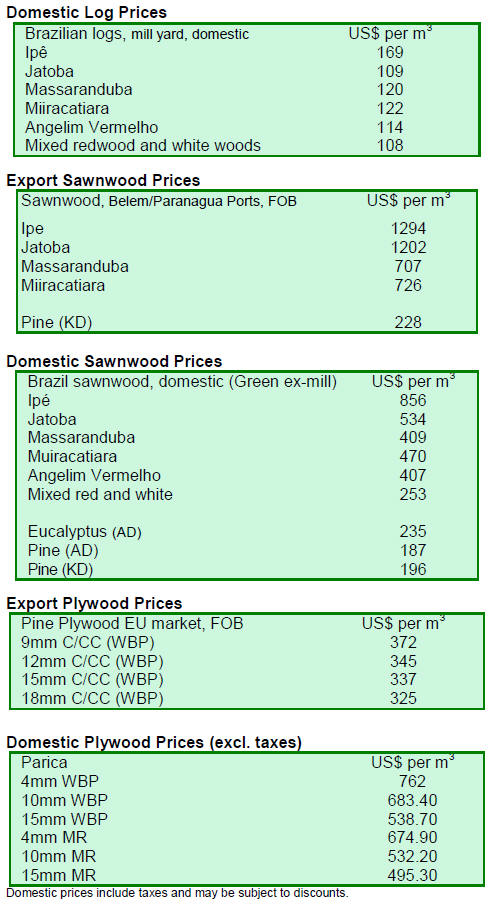
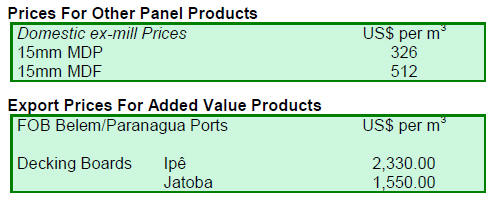
8. PERU
Germany supporting forest management
The German Development Bank (KFW) has contributed
US$0.85mil. to the Forest and Wildlife department
(DGFFS) of the Ministry of Agriculture and Irrigation to
implement a sustainable forest management programme to
improve the competitiveness of the sector.
This first contribution and will be used for pre-investment
studies of this programme and an assessment of is
compatibility with the National Public Investment System
(SNIP).
The second phase of the programme involve another
contribution of US$49.4 million from KFW, of which
US$42.3 million will be a loan, and US$ 7.1 million will
be contributed by the Peruvian government.
Activities will be conducted in the regions of Loreto,
Ucayali, San Martin, Amazonas, Madre de Dios, Cusco,
Puno, Junin, Ayacucho, Pasco, Huanuco and Cajamarca,
for a period of five years.
Regional efforts to tackle illegal logging
The Ministry of Economy and Finance (MEF) has
authorised the transfer of US$0.62 mil. to nine regional
governments to maintain and operate control systems for
the fight against illegal logging and transport of illegal
timber.
The funds for these activities will come from the budgets
of the Ministry of Agriculture and Irrigation (MINAGRI)
and will be transferred to the regional governments of
Amazonas, Ayacucho, Hu¨¢nuco, La Libertad, Loreto,
Madre de Dios, San Martin, Tumbes and Ucayali.

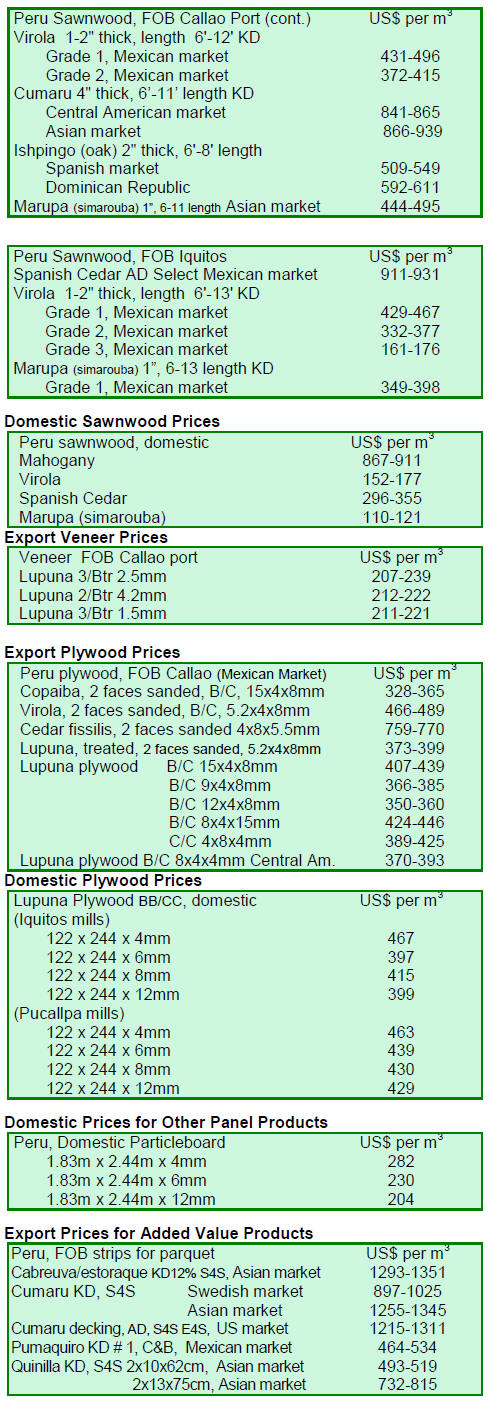
9.
GUYANA
Moderately brisk logs exports and
encouraging prices
During the period reviewed greenheart logs were exported
and there were price adjustments in all categories.
Standard sawmill quality log FOB prices were US$210 per
cubic metre, Fair sawmill quality greenheart logs were
traded at between US$130 and US$210 per cubic metre
FOB while Small sawmill quality logs were sold for
US$120 per cubic metre.
Purpleheart logs attracted favourable prices. The top end
price for Standard sawmill quality purpleheart logs was
US$215 FOB, Fair sawmill quality logs traded at US$200
per cubic metre while Small sawmill quality logs were
priced at US$170 per cubic metre FOB.
There were no exports of Mora logs in the period
reviewed.
Sawnwood demand remains firm
Overall, sawnwood prices were favourable and made a
valuable contribution towards the total export earnings.
Undressed greenheart (Prime) saw a decline in price from
US$1,057 to US$954 per cubic metre FOB. But for Select
category there was an improvement in price from US$
1,060 to US$ 1,102 per cubic metre.
Sound category Undressed sawn greenheart recorded an
increase in price from US$763 to US$933 per cubic metre
FOB. Undressed Greenheart, which is an ideal timber for
heavy duty construction, was in high demand in
Caribbean, European, Middle Eastern, North American
and Oceania markets.
Undressed purpleheart sawnwood export prices improved
moving up from US$1,100 to US$1,200 per cubic metre
FOB. This product was exported to markets in Asia,
Caribbean, Oceania and North America.
Export prices for Undressed mora were maintained at
US$500 per cubic metre FOB for markets in Asia, the
Caribbean and Europe.
Dressed greenheart FOB prices moved up from US$996 to
US$1,158 per cubic metre FOB and the Caribbean remains
the main market for this product. Similarly Dressed
purpleheart recorded an attractive price on the market
which saw the price moving from US$1,060 to US$1,158
per cubic metre.
Caribbean markets providing good opportunities
Guyana‟s Plywood continues to be in high demand in
Central and South American markets earning prices as
much as US$ 584 per cubic metre FOB.
Splitwood (shingles) prices remain firm and FOB prices
increased from US$1,000 to US$1,332 per cubic metre in
Caribbean and North America markets.
Domestic mills advised to change business model
to
capture market share
The Forest Products Development and Marketing Council
(FPDMC) has determined that, when it comes to the
domestic market, the timber industry in the country needs
to adjust their business model from the current traditional
way of supplying wood products one that is more
customer- friendly with respect to price, quality and
accessibility.
Currently, local millers face strong competition from
imported wood products especially pine sawnwood which
is available in standard sizes.
With this in mind the FPDMC is promoting the concept of
supplying dimensional sawnwood for specific enduses.
This, says the FPDMC, would deliver savings to the
consumer as well as increase sales from supplier.
Producers of sawnwood could significantly expand their
market base by stocking dimensional timber in local
outlets.
The production of dimensional sawnwood in standard
sizes may also open up further opportunities in foreign
markets says the FPDMC.
